Chickasaw and Chocktaw
Oklahoma (from Okla Humma by the Chocktaw) becomes home to 5 “Civilized” Native American Nations in the 1830-40s as part of the Indian Removal Act. US Forces uproot the Cherokee, Chickasaw, Choctaw, Muscogee, and Seminole nations from the deep south. Forcing them to move to “Indian Territory” – land west of the Mississippi River. I, being in Southern Oklahoma – Chickasaw Country, seek to learn more about these indigenous people.
A Chickasaw Legend
Somewhere in the west, long ago, an Indian tribe wishes to escape constant warring and strife. The tribal elders consult with the Creator of all Things, Ubabaneli. The elders make the decision to follow the fabassa (sacred pole), to a new home of peace and tranquility. The sacred pole, crafted by Ubabenli will point them to this new land. Each night the chief plants the pole into the ground. The following morning the direction of lean in the pole determines that days direction of travel. This process will continue until the pole leans no more. This will be the sign that they have reached the promised land.
The Scared Pole & White Dog
Tribe leaders consult the members and with song and dance, they pack and prepare for the long journey. They awake to see the pole leaning toward the rising sun. The procession heads east led by a large white dog that appears before the journey. The beloved dog stays in front of the tribe darting right and left and quick to warn of impending dangers ahead.
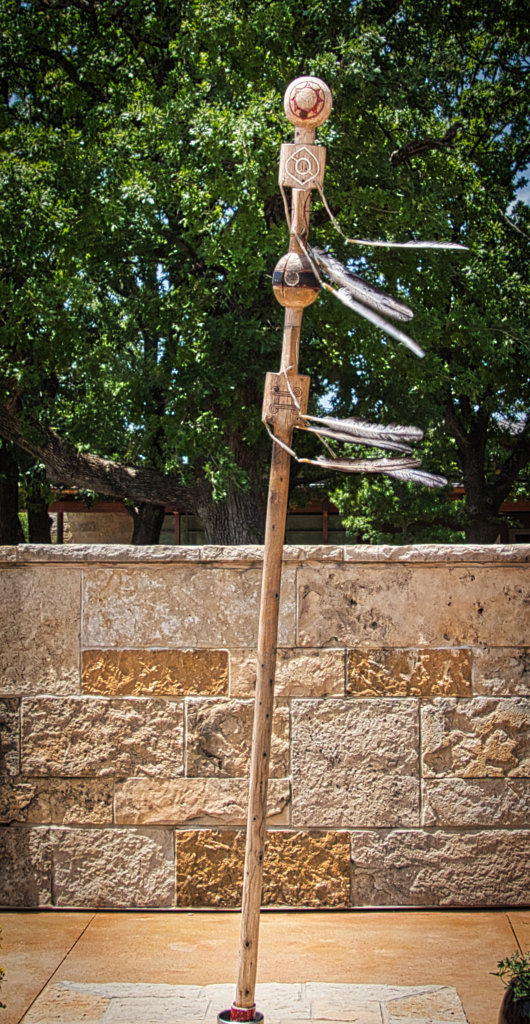
After months of travel, and just as the sun is setting one night the tribe comes upon a great river. They call it the misha sipokoni (beyond all age), now the Mississippi River. The people joyous as they feel they must have reached the homeland. Only to be disappointed that the sacred pole still points east the following morning.
After days of regrouping, raft building and ferrying goods across the mighty river, tragedy strikes. The raft carrying the white dog breaks apart. The people survive but the dog is last seen floating downstream. (The White Dog remains sacred in tribal culture today)
Not far into Mississippi, the tribe awakens to a wobbling pole. This leads to confusion among the leaders, brothers Chief Chocktow and Chief Chickasaw. One takes it to mean they found the homeland the other took it as a sign to keep moving. The clan splits, those that stay become the Choctaws those that venture further east, the Chickasaws.
Chief Chickasaw leads his tribe as far east as Alabama and Georgia when the pole leans this time back west. Leading them back to Mississippi before it remains perfectly still overnight.
Mississippi is to be the new homeland.
All for Riches of Gold
Hundreds of years later, in late 1540, the Spanish explorer Ferdinand de Soto in his insatiable quest for riches and fame sets toward the Mississippi. Leaving his newly discovered land of Florida, he pushes through Georgia and into what is now Mississippi, Alabama, and Tennessee. It is along the Mississippi River that he encounters the Chickasaw Indian tribe. The Chickasaws’ best efforts to trade and peacefully coexist with the European invaders’, are not met favorably. Tensions mount when during an unusually cold and snowy Mississippi winter, de Sotos’ men pillage and raid the Chickasaw of their stored food supply. Three Chickasaw warriors plot to retake their goods; de Soto executes and returns one to the Chief minus his severed hands.

The reckoning
An uneasy truce remains until de Soto, in preparation to leave the area, demands 200 Chickasaw warriors and several women to escort him and his men as essentially slaves. Knowing that DeSoto had previously killed thousands of Indians in Alabama and sensing an attack inevitable, tribe Leader Miculasa orders a sneak attack. In the wee hours one morning in March 1541, the Chickasaw wrap arrowheads in dried herbs and grasses and ignite them and launch them into the thatched roofs huts of de Soto and his men. As they run from the flaming structures, they are met with throws of arrows. Suffering massive casualties they quickly retreat from the Chickasaws territory. After this skirmish, the Chickasaw earn the reputation as fierce warriors. de Sota dies a short time later and is sunken into the Mississippi River.
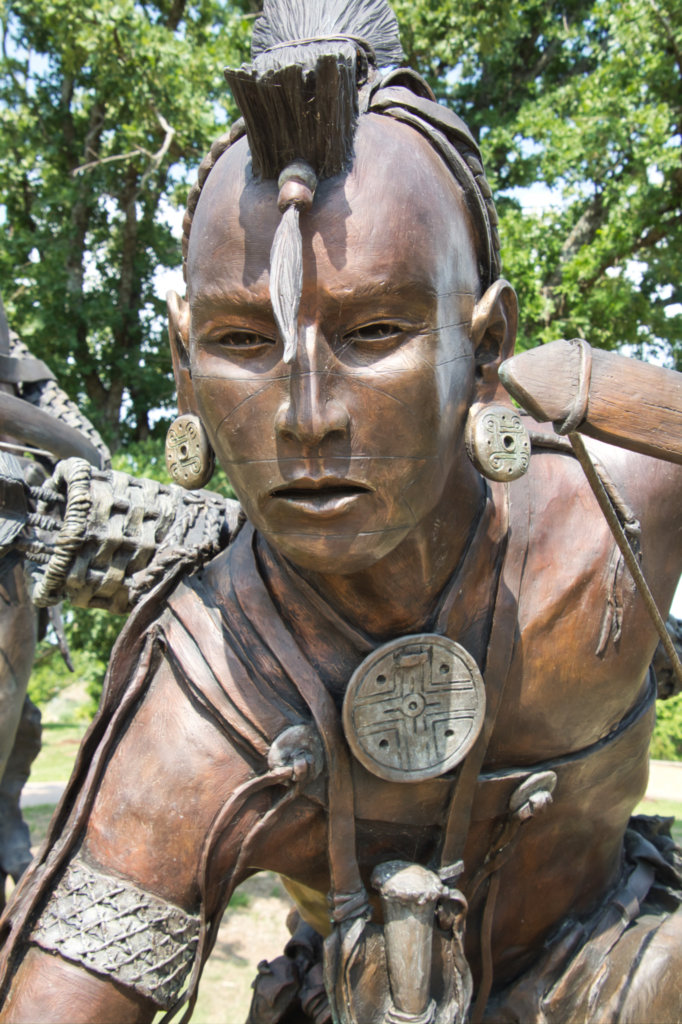
The Chickasaw survive de Soto and other European threats. Not until the force of the US Government gets involved do they finally relinquish their native lands. Known as the Trail of Tears or “The Removal” as the natives refer to it. The Chickasaw and Choctaws are systematically relocated to central Oklahoma.
Tribe elders recount stories and historical events such as these. The Chickasaw tribe reveres their elders and it’s the elders’ responsibility to convey ancient knowledge, tribe history, and traditions to the younger generations.
Chickasaw Cultural Cental
To further preserve the rich history, storytelling, and traditions of the Chickasaw Nation, the Chickasaw Cultural Center was erected in Sulpher, Oklahoma. The109-acre campus features a recreated village, meeting spaces, cafeteria, and theater.
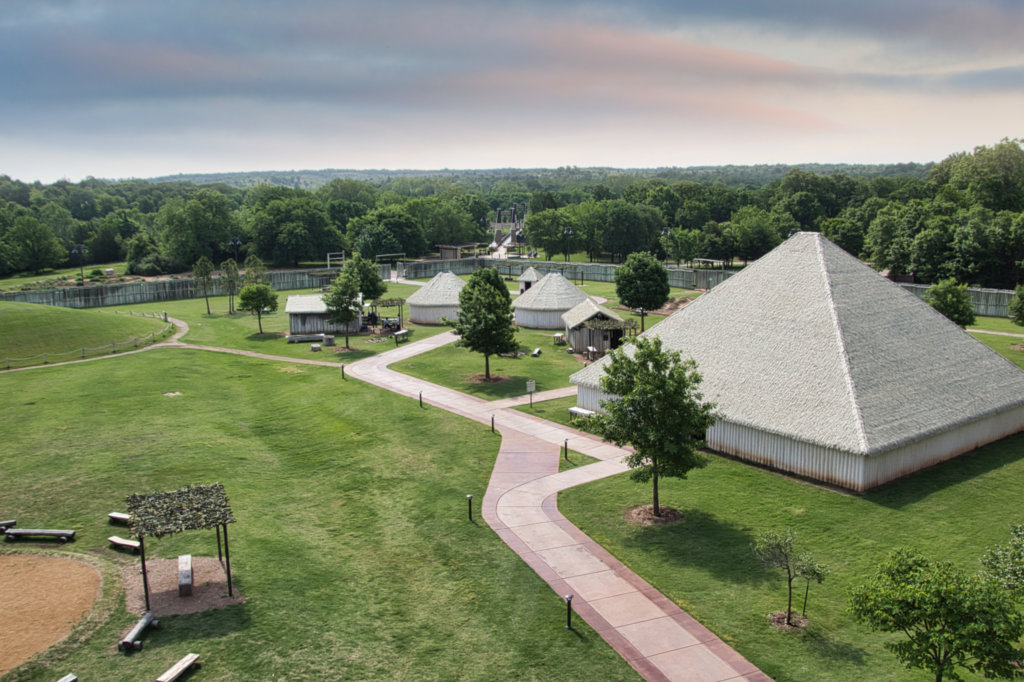 Chickasaw Village
Chickasaw Village
The villages’ meeting circle is symbolic of tribal life. Its uses include interpretive dance and song performances. The interpreters are 100% Chickasaw and take their role and history with earnest and pride. Though I find it amusing to see them in traditional dress while consulting smartphones and wearing iWatches. The Chickasaw were prolific traders and quick to incorporate new goods and materials. So, in all honesty, it’s keeping with tradition though with a modern twist.
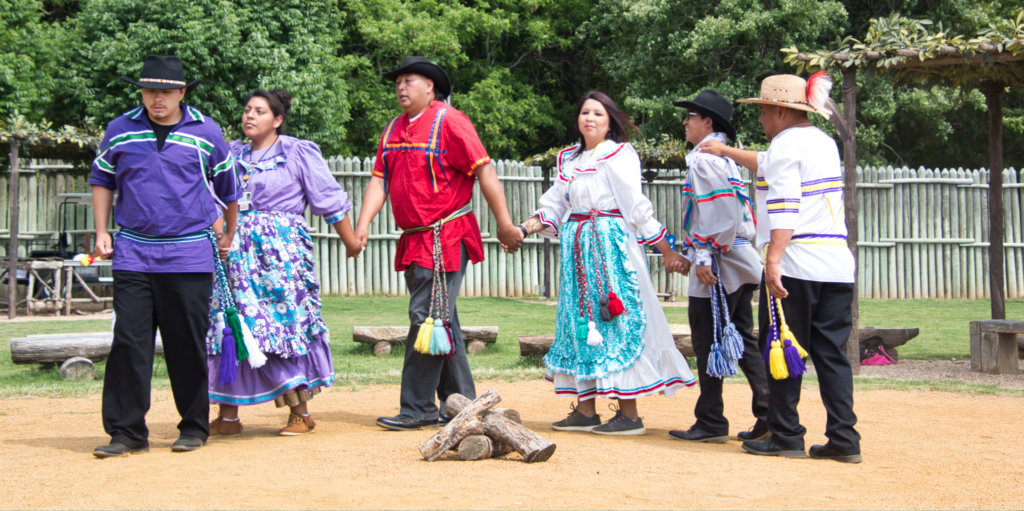
The campus grounds are magnificent and meticulously maintained. Numerous fountains, an eternal flame, and statuary pay tribute to people and aspects of tribal life.
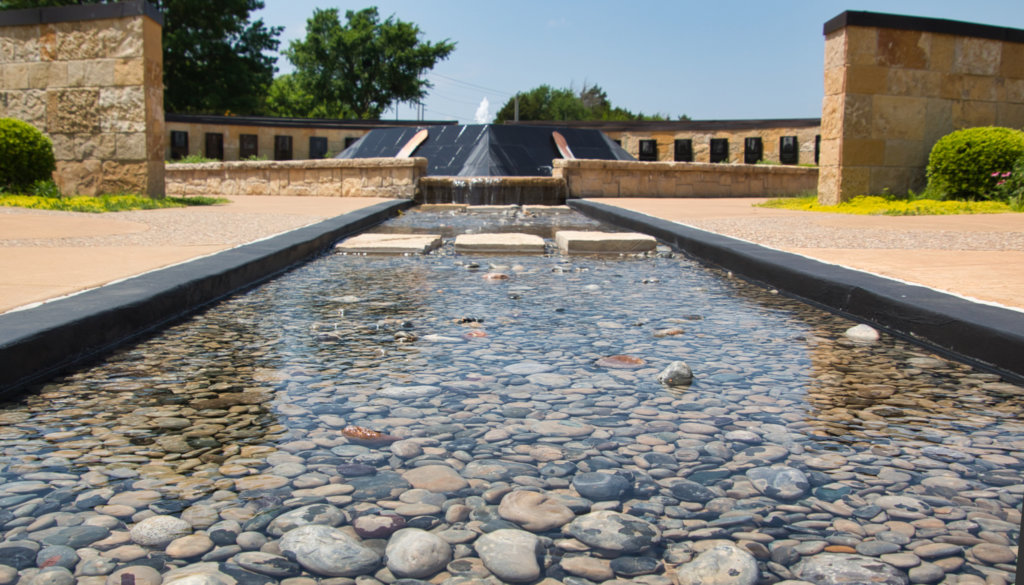
I tour the grounds, watch a stomp dance presentation, take in the movie “First Encounter” that recalls the events of the de Soto skirmish, and take in lunch of fry bread with taco toppings. I nearly overlooked the Chikasha Poya Exhibit Center. Part museum, part art gallery it is one of the best venues I have seen for presenting a story through time. Through these exhibits, the Chickasaw earn their reputation as storytellers, the elders would be proud.
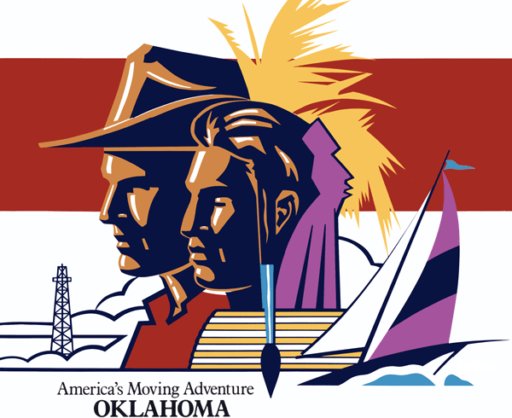
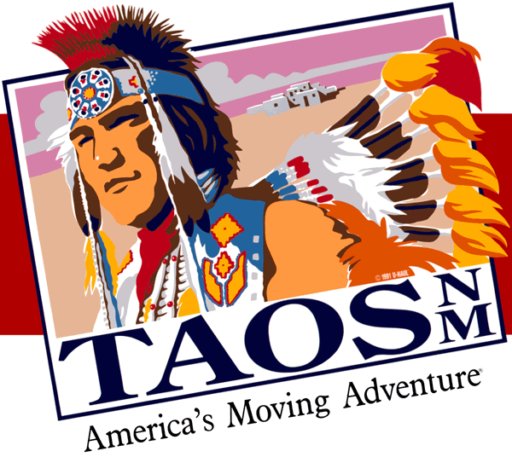

1 thought on “Oklahoma Native Americans-”